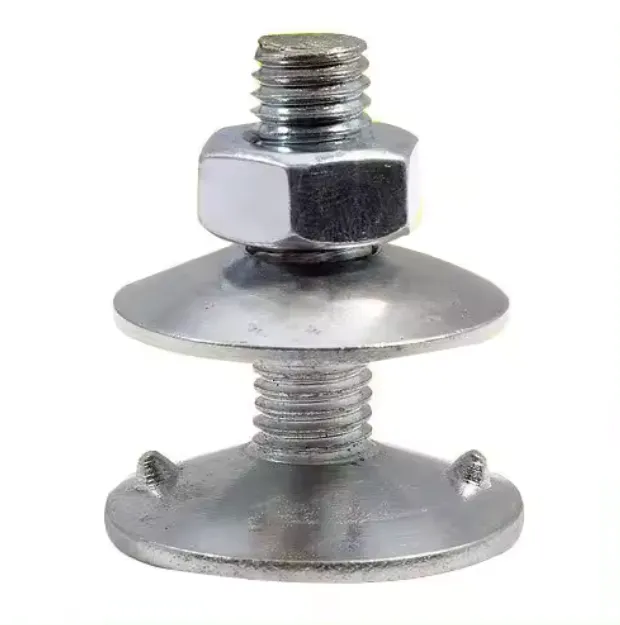

projection weld studs
Dec . 04, 2024 16:48 Back to list
projection weld studs
Understanding Projection Weld Studs An Essential Component in Modern Manufacturing
Projection weld studs are a vital component in the field of manufacturing, particularly in industries that require high-strength, reliable joints between different materials. These small, yet powerful fasteners are used in various applications, particularly in the automotive, construction, and electronics sectors. This article aims to delve into the intricacies of projection weld studs, exploring their functionality, advantages, applications, and future prospects.
What are Projection Weld Studs?
Projection weld studs are specialized fastening elements designed for projection welding, a process that fuses two metal surfaces together using heat generated from electrical resistance. These studs typically feature one or more projections that concentrate the welding current, creating a localized heating effect. As the metal reaches its melting point, the projections fuse with the counterpart metal, forming a robust joint.
The design of projection weld studs varies depending on the application, but they are commonly made from materials like carbon steel, stainless steel, and aluminum, ensuring they can withstand high levels of stress and environmental exposure. Additionally, they can be plated or coated for improved corrosion resistance and aesthetic appeal.
Advantages of Projection Weld Studs
One of the primary advantages of using projection weld studs is the efficiency they offer in the welding process. Unlike traditional welding methods that may require extensive preparatory work, projection welding is faster and often requires less energy. This is largely due to the direct contact of the stud projections with the workpieces, allowing for a more focused application of heat.
Moreover, projection weld studs provide remarkable joint strength and consistency. The nature of the weld ensures that the mechanical properties of the materials involved are preserved, leading to enhanced structural integrity. This reliability is crucial in industries such as automotive manufacturing, where the failure of a component can have severe safety implications.
Another significant benefit is the reduction of labor costs. The automation of the projection welding process allows for high-volume production rates, minimizing the need for manual intervention. As a result, manufacturers can produce components more quickly and cost-effectively, optimizing their operations.
projection weld studs

Applications of Projection Weld Studs
Projection weld studs find applications in various industries due to their versatility and strength. In the automotive sector, they are extensively used for attaching components such as brackets, panels, and electrical connections. The ability to create strong, lightweight joints makes them particularly suitable for modern vehicles, where weight reduction is crucial for fuel efficiency.
In the construction industry, projection weld studs are employed for applications like steel framing and the assembly of HVAC systems. Their ability to create secure joints without the need for additional fasteners simplifies the assembly process, resulting in quicker construction timelines.
In electronics, projection weld studs are utilized for connecting electrical components, ensuring reliable electrical conductivity in devices. The precision of the welding process enables manufacturers to create compact and robust electronic assemblies.
Future Prospects
As the manufacturing landscape evolves, projection weld studs are poised for growth. Innovations in materials science and welding technology may lead to even more efficient welding methods with improved joint characteristics. Additionally, as industries continue to embrace automation and smart manufacturing practices, the demand for reliable and high-performance fastening solutions like projection weld studs is likely to increase.
Moreover, the emphasis on sustainability and waste reduction in manufacturing could drive the development of more eco-friendly materials and processes for creating projection weld studs, aligning with global initiatives to reduce the environmental impact of production.
Conclusion
Projection weld studs are an essential component in modern manufacturing, offering a combination of strength, efficiency, and versatility. Their ability to create reliable joints across various applications makes them invaluable in industries ranging from automotive to electronics. As technology continues to advance, the future of projection weld studs appears promising, with potential innovations set to further enhance their capabilities and applications. Understanding and leveraging the benefits of projection weld studs can not only optimize production processes but also contribute to the creation of safer and more efficient products for consumers worldwide.
Latest news
-
High-Strength Hot Dip Galvanized Bolts - Hebei Longze | Corrosion Resistance, Customization
NewsJul.30,2025
-
Hot Dip Galvanized Bolts-Hebei Longze|Corrosion Resistance&High Strength
NewsJul.30,2025
-
High-Strength Hot-Dip Galvanized Bolts-Hebei Longze|Corrosion Resistance&High Strength
NewsJul.30,2025
-
Hot Dip Galvanized Bolts-Hebei Longze|Corrosion Resistance&High Strength
NewsJul.30,2025
-
Hot Dip Galvanized Bolts - Hebei Longze | Corrosion Resistance, High Strength
NewsJul.30,2025
-
High-Strength Hot Dip Galvanized Bolts-Hebei Longze|Corrosion Resistance, Grade 8.8
NewsJul.30,2025

